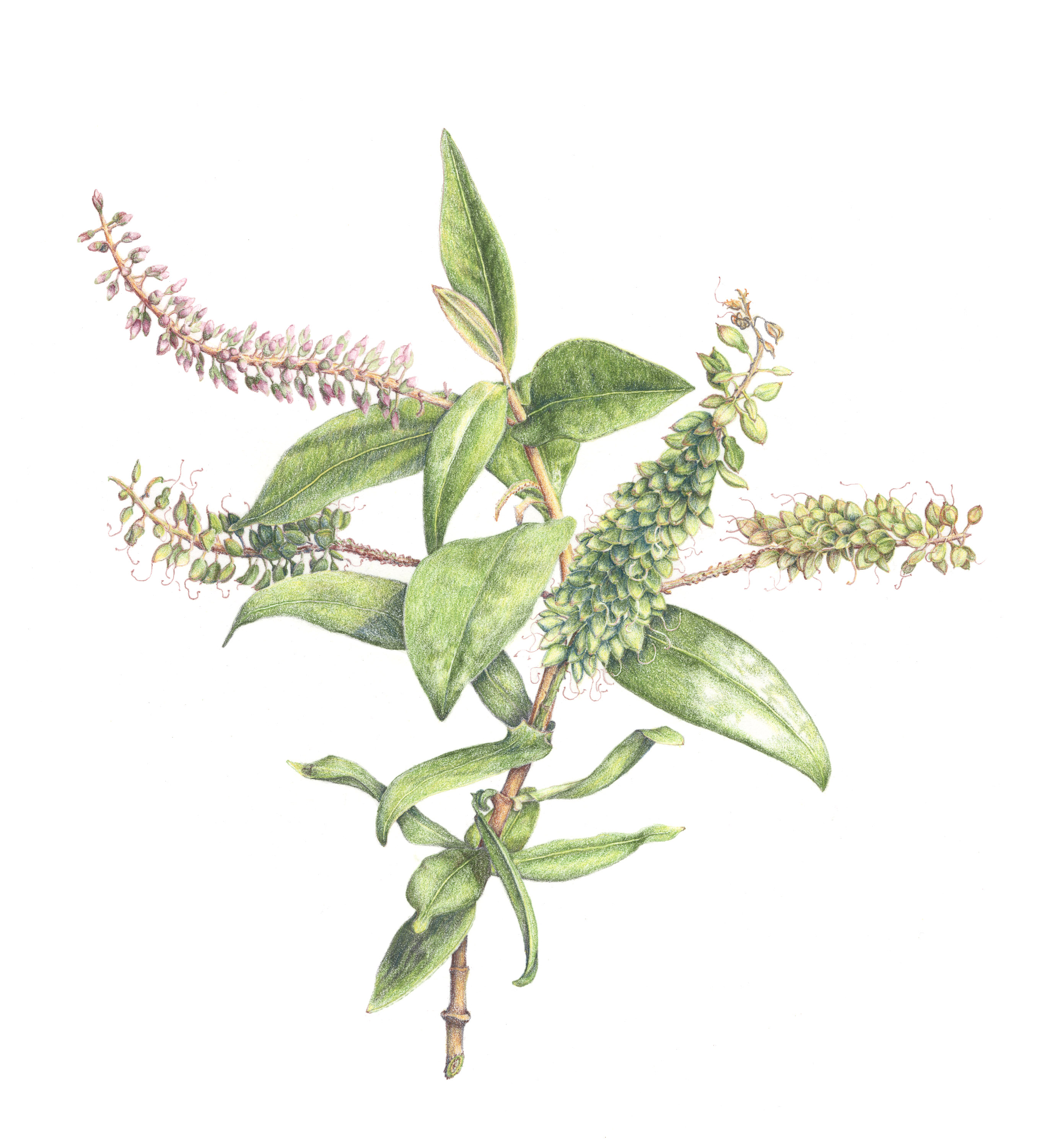This top turned out well and I plan to wear it tomorrow when I go…fabric shopping! Will post the results of my first purposeful fabric shopping trip in ages. I’ve been in and near fabric shops over the course of the reduction program and have resisted adding to the stash, only buying what was needed for any current planned project and then using it up before getting back to stash reduction. This lightweight knit is again from the stash, I think it came from Fabric.com. There were other fabrics ahead in the queue but I finished knitting the sweater below and thought I might make a top to wear with this crazy sweater since the colors were so lovely together. I know, crazy idea. The best thing to do with that sweater is probably wad it up and toss it into the charity bin. But more on the sweater in a minute. This pattern has become my go-to cowl neck pattern. I’ve got others, but they droop too low. This one is just right. Not sure how many 3/4 sleeve cowl neck tees I need, but I might make one more for winter and then will switch to spring/summer sewing and might need a few short sleeve or sleeveless versions for next year. This time, I added a (an?) FBA to the pattern and that fixed the snugness all around. Fit is good. Even in this lighter weight, stretchier fabric, the sleeve cap wouldn’t set in without being cut down so I will do that to the pattern permanently now.
Note to Palmer and Pletsch: yes, a set-in sleeve with a higher cap gives a more snappy appearance to a plain t-shirt, but what’s the point if the cap is SO high you can’t set it in without either gathering it or cutting it down in knits?
Okay, now on to the sweater:
Well it’s hard to say whether the yarn choice or the knitting instructions were the biggest culprit in this case but 2 lessons learned:
- If a Craftsy Class combines the words Lace and Crazy in the title, whatever results is probably not going to be my cup of tea. There were a couple of sweaters posted on the class boards by students in this Crazy Lace Sweater Class that were really cute, but I didn’t like most of the students’ sweaters or even the sweaters knitted by the instructor for the class and that should have been a huge clue. The one or two successes were very experienced knitters who completely altered the pattern. And I know Lace is not crazy. Lace is lovely and serious, requiring attention to business at all times and deserving of a certain class of yarn, not craziness, which is for socks. I do enjoy a little craziness in my socks now and again.
- Singles yarns can be lovely, but the “textural” ones are declared forever off the table for me. This yarn varied from fingering (sock) weight to nearly super-bulky weight randomly as you knitted along. I hated knitting with it and do not like how it looks. I will look more closely at yarn in future. This is Manos Del Uruguay, worsted weight in Cornflower, which you’d think would be blue, but is really quite as purple as it looks in the photo.
So, there’s countless hours of knitting down the tubes. Good thing knitting brings other rewards. This thing came out so huge I had to basically do some half-fashioning and treat the knitted fabric as just that, fabric, and sew up the side seams, taking out about 4 inches per side after completing the sweater. I’m not much for un-knitting a whole sweater and you really can sew knitted fabric on your sewing machine easily, it won’t ravel if you do it right. The sweater is so lumpy and bumpy because of the inconsistent weight of the yarn and it will not settle down with blocking, I tried that. To make matters worse, the dye is inconsistent as well so the sweater really had no hope. I should never have tried even a minimally structured garment out of such unstructured yarn, but I only noticed the lovely color and thought the variations might add interest to the areas of plain knitting but not overwhelm the lace. Not the first time I’ve gone this wrong, but the first in a long time. I’ve got several successful sweaters knit from Jacquelyn Fee’s book, The Sweater Workshop. Next time I’ve got the urge to knit a sweater, I’ll head back there and get some less capricious yarn. Meantime, I might make some fingerless mitts out of what I’ve got left since the color goes so well with this top. On fingerless mitts, I don’t think the yarn variations will be such an issue and although they are structured, they are quite small. Or even better, a loose-knit open scarf pattern would serve, but I’m not sure this top needs a scarf. The neck has enough interest on its own without adding a scarf, plus I don’t trust this wool against my neck. I’ll think about it a bit longer before committing this time. For the now, I’m back to knitting socks, and not even crazy ones, just plain brown superwash wool. Winter’s coming.




















